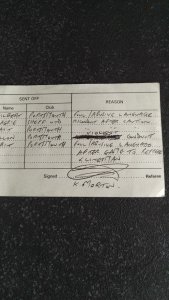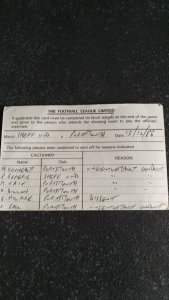Navigation
Install the app
How to install the app on iOS
Follow along with the video below to see how to install our site as a web app on your home screen.
Note: This feature may not be available in some browsers.
More options
Style variation
You are using an out of date browser. It may not display this or other websites correctly.
You should upgrade or use an alternative browser.
You should upgrade or use an alternative browser.
Old Photos For No Reason Whatsoever
- Thread starter Bert
- Start date
All advertisments are hidden for logged in members, why not log in/register?
Lane Ender
Well-Known Member
- Joined
- Jan 16, 2014
- Messages
- 6,333
- Reaction score
- 5,882
YeaEcclesfield's Vinnie Jones?
Isaw Joeshaw
Old School Blade
- Joined
- May 17, 2017
- Messages
- 5,205
- Reaction score
- 14,567
They still sing the carols in the Black Bull.
Brian Gloag and Albert Rodgers were the White Bear's stalwart darts players.
Joe Cocker once turned up and sang in the upstairs concert room. Bert missed it.
Brian Gloag had the most elegant throwing style of any darts player I ever saw , amateur or professional .
He used Jim Pikes with 7 inch plastic flights and just drifted them to the board with deadly accuracy . After watching him , I rushed off to Darlows on West St. the following day and bought a set and used them to good effect , if I may say so .
Does Bert remember the name of their other star player , a shortish older bloke with a gammy leg who also played for the Angel at Grenoside ?
Bert
Well-Known Member
- Joined
- Aug 6, 2009
- Messages
- 10,407
- Reaction score
- 26,992
- Thread starter
- #15,874
These days Brian Gloag would have been a professional.Brian Gloag had the most elegant throwing style of any darts player I ever saw , amateur or professional .
He used Jim Pikes with 7 inch plastic flights and just drifted them to the board with deadly accuracy . After watching him , I rushed off to Darlows on West St. the following day and bought a set and used them to good effect , if I may say so .
Does Bert remember the name of their other star player , a shortish older bloke with a gammy leg who also played for the Angel at Grenoside ?
Bert can visualise the older bloke but he can't remember his name.
XM657
Active Member
- Joined
- Jan 13, 2014
- Messages
- 2,015
- Reaction score
- 2,721
Thank you for the video, seeing the moving car only one way to describe it, glides. Mind as I said when they unleashed them they didn't half sway and rock.I still think that the old system should never have been scrapped, but the car was king & look where that has got us.
I'm a little younger so,wasn't around for the old system but their are quite a few old Sheffield survivors, mainly at Crich, but a couple elsewhere as well.
Of the Roberts cars, 2 survive, 510 at Crich & 513 although owned by the Beamish museum is on loan at the East Anglia Transport Museum. (Below)
View attachment 76582
I always thought SCT livery second to none, and what interested me was the blue lines had 1/2or3/4 inch black lines top and bottom which emphasises the blue line even more, rather than if it had been blue next to cream, very cleaver. Even the older cars with the black bottom sections, which I believe were only painted and decorated once, there after they were lacquered, being built in the 1920's.
The photo is 404 at Middlewood terminus between the wars. See how clean it is another feature of SCT, for the most part every thing was kept spick and span. No mean feat in Sheffield, a very grime infested city.
As lads and youths in groups tended to move seat backs so as to face one another on journey. Conductors would either let you or not and their word was law. If they did, made sure things were left as found.
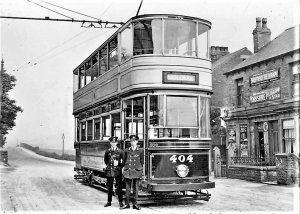
Alf Tuppers Shorts
Member
- Joined
- Oct 10, 2019
- Messages
- 409
- Reaction score
- 591
Some very knowledgeable people on this thread regarding Sheffield and surrounding areas . Not from Sheffield area myself got me thinking , is there a specific area where De- Dah is spoken . Go to Barnsley away game and all they sing is De- Dah, De-Dah. But on a match day you don’t very often hear it spoken although there are crowds of 30000.
Worst case we ever heard was on a boat trip in Tenby , a group got on and where talking very strong De-Dah Sheffield accents, my wife thought it was proper Welsh accents until I told her they are from Sheffield.
So just wondered if it was only from a certain part of Sheffield this accent originally comes from , like if you are born within the sounds of Bow bells you are a proper cockney and talk utter crap.
Worst case we ever heard was on a boat trip in Tenby , a group got on and where talking very strong De-Dah Sheffield accents, my wife thought it was proper Welsh accents until I told her they are from Sheffield.
So just wondered if it was only from a certain part of Sheffield this accent originally comes from , like if you are born within the sounds of Bow bells you are a proper cockney and talk utter crap.
We lost a nice livery in 1974 when Sheffield transport became part of SYPTE, the tan & creme was an awful choice of livery. In the early 1950s SCT trialed two different green colour schemes, one an all over dark green similar to the Liverpool trams of the time. The other was a two tone scheme, the main colour being fairly light with a darker shade where the blue bands were on the rest of the fleet.Thank you for the video, seeing the moving car only one way to describe it, glides. Mind as I said when they unleashed them they didn't half sway and rock.
I always thought SCT livery second to none, and what interested me was the blue lines had 1/2or3/4 inch black lines top and bottom which emphasises the blue line even more, rather than if it had been blue next to cream, very cleaver. Even the older cars with the black bottom sections, which I believe were only painted and decorated once, there after they were lacquered, being built in the 1920's.
The photo is 404 at Middlewood terminus between the wars. See how clean it is another feature of SCT, for the most part every thing was kept spick and span. No mean feat in Sheffield, a very grime infested city.
As lads and youths in groups tended to move seat backs so as to face one another on journey. Conductors would either let you or not and their word was law. If they did, made sure things were left as found.
View attachment 76694
Incidentally the rocker panels that you remember as black were actually Prussian Blue, but probably looked black from repeated coats of varnish.
The car in your photo was built in 1919 at Queens Road works & withdrawn in 1954. It is of a type nicknamed the "banjo" cars, owing to the shape of the small front window where the motorman's controller was.
First Sheffield have painted some modern buses in old corporation livery's..
The original SCT livery
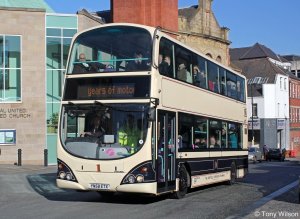
The last SCT livery (note the registration, originally from an SCT Leyland PD3/1)
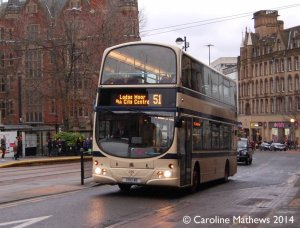
SYPTE post 1974 livery
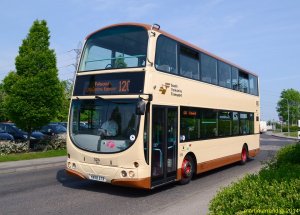
And the experimental green livery's from 1952 (First image (C) R J Wiseman)
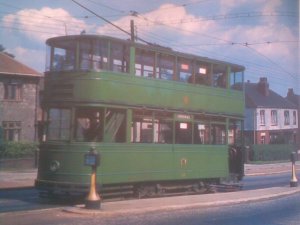
Credit to whoever made the model below
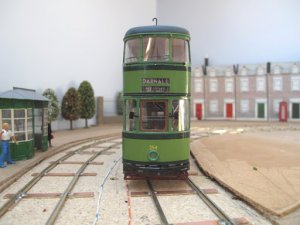
Last edited:
Kop sufferer
Money talks, but all mine says is goodbye.
- Joined
- Dec 15, 2018
- Messages
- 680
- Reaction score
- 852
We lost a nice livery in 1974 when Sheffield transport became part of SYPTE, the tan & creme was an awful choice of livery. In the early 1950s SCT trialed two different green colour schemes, one an all over dark green similar to the Liverpool trams of the time. The other was a two tone scheme, the main colour being fairly light with a darker shade where the blue bands were on the rest of the fleet.
Incidentally the rocker panels that you remember as black were actually Prussian Blue, but probably looked black from repeated coats of varnish.
The car in your photo was built in 1919 at Queens Road works & withdrawn in 1954. It is of a type nicknamed the "banjo" cars, owing to the shape of the small front window where the motorman's controller was.
First Sheffield have painted some modern buses in old corporation livery's..
The original SCT livery
View attachment 76725
The last SCT livery (note the registration, originally from an SCT Leyland PD3/1)
View attachment 76727
SYPTE post 1974 livery
View attachment 76728
And the experimental green livery's from 1952 (First image (C) R J Wiseman)
View attachment 76729
Credit to whoever made the model below
View attachment 76730
WOW, thanks Don, you don't arf lean some stuff on hereWe lost a nice livery in 1974 when Sheffield transport became part of SYPTE, the tan & creme was an awful choice of livery. In the early 1950s SCT trialed two different green colour schemes, one an all over dark green similar to the Liverpool trams of the time. The other was a two tone scheme, the main colour being fairly light with a darker shade where the blue bands were on the rest of the fleet.
Incidentally the rocker panels that you remember as black were actually Prussian Blue, but probably looked black from repeated coats of varnish.
The car in your photo was built in 1919 at Queens Road works & withdrawn in 1954. It is of a type nicknamed the "banjo" cars, owing to the shape of the small front window where the motorman's controller was.
First Sheffield have painted some modern buses in old corporation livery's..
The original SCT livery
View attachment 76725
The last SCT livery (note the registration, originally from an SCT Leyland PD3/1)
View attachment 76727
SYPTE post 1974 livery
View attachment 76728
And the experimental green livery's from 1952 (First image (C) R J Wiseman)
View attachment 76729
Credit to whoever made the model below
View attachment 76730
You're welcomeWOW, thanks Don, you don't arf lean some stuff on here
Calver Street, October 1984.
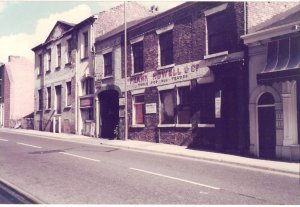
Below, is one of the small workshops inside. The engineering "towel", hanging on the left made me smile.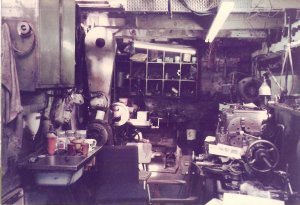
I also took a photo of the kind chap who let me take this pic, posing in the courtyard. It turned out he was the dad of one of my workmates. But I'm not sure of the privacy rules on this site, so haven't posted it

Below, is one of the small workshops inside. The engineering "towel", hanging on the left made me smile.

I also took a photo of the kind chap who let me take this pic, posing in the courtyard. It turned out he was the dad of one of my workmates. But I'm not sure of the privacy rules on this site, so haven't posted it
HighfieldBlade
Well-Known Member
My father spent his entire working life working on the buses in Sheffield. In terms of livery, my fondest memories were from the early 70s with the cream and dark blue buses, like this Leyland Atlantean.We lost a nice livery in 1974 when Sheffield transport became part of SYPTE, the tan & creme was an awful choice of livery. In the early 1950s SCT trialed two different green colour schemes, one an all over dark green similar to the Liverpool trams of the time. The other was a two tone scheme, the main colour being fairly light with a darker shade where the blue bands were on the rest of the fleet.
Incidentally the rocker panels that you remember as black were actually Prussian Blue, but probably looked black from repeated coats of varnish.
The car in your photo was built in 1919 at Queens Road works & withdrawn in 1954. It is of a type nicknamed the "banjo" cars, owing to the shape of the small front window where the motorman's controller was.
First Sheffield have painted some modern buses in old corporation livery's..
The original SCT livery
View attachment 76725
The last SCT livery (note the registration, originally from an SCT Leyland PD3/1)
View attachment 76727
SYPTE post 1974 livery
View attachment 76728
And the experimental green livery's from 1952 (First image (C) R J Wiseman)
View attachment 76729
Credit to whoever made the model below
View attachment 76730
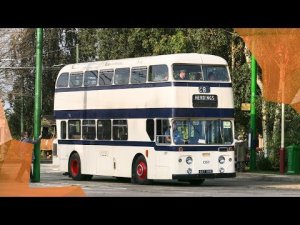
My father worked out of Shoreham depot from 1969 - 1991 they maybe knew each other.My father spent his entire working life working on the buses in Sheffield. In terms of livery, my fondest memories were from the early 70s with the cream and dark blue buses, like this Leyland Atlantean.
View attachment 76750
The wheels on your photo are red as apparently they were painted in the colour of the political party running Sheffield council. (so usually red).
HighfieldBlade
Well-Known Member
Don't know the exact years my father worked on the buses, but at a guess 1960-1985, working at Olive Grove Rd and East Bank Rd depots.My father worked out of Shoreham depot from 1969 - 1991 they maybe knew each other.
The wheels on your photo are red as apparently they were painted in the colour of the political party running Sheffield council. (so usually red).
The broad de da accent is from the East side of Sheffield primarily from Attercliffe/Darnall area. My 90 year mother in law still speaks in that very broad accent. People from other areas of Sheffield used to refer to the East enders as de das and not in a endearing way.Some very knowledgeable people on this thread regarding Sheffield and surrounding areas . Not from Sheffield area myself got me thinking , is there a specific area where De- Dah is spoken . Go to Barnsley away game and all they sing is De- Dah, De-Dah. But on a match day you don’t very often hear it spoken although there are crowds of 30000.
Worst case we ever heard was on a boat trip in Tenby , a group got on and where talking very strong De-Dah Sheffield accents, my wife thought it was proper Welsh accents until I told her they are from Sheffield.
So just wondered if it was only from a certain part of Sheffield this accent originally comes from , like if you are born within the sounds of Bow bells you are a proper cockney and talk utter crap.
SouthEssexBlade
...for wit and sage wisdom
The broad de da accent is from the East side of Sheffield primarily from Attercliffe/Darnall area. My 90 year mother in law still speaks in that very broad accent. People from other areas of Sheffield used to refer to the East enders as de das and not in a endearing way.
You could probably extend that out to the Handsworth/Woodhouse areas. My late grandfather spoke with that same broad accent and dialect. He lived in the Woodhouse and Woodhouse mill area his whole life.
Coming from Handsworth I know what you mean and I think the spread out further south eastwards of the accent was probably due to many from that area working in the industries around Attercliffe.You could probably extend that out to the Handsworth/Woodhouse areas. My late grandfather spoke with that same broad accent and dialect. He lived in the Woodhouse and Woodhouse mill area his whole life.
SouthEssexBlade
...for wit and sage wisdom
Coming from Handsworth I know what you mean and I think the spread out further south eastwards of the accent was probably due to many from that area working in the industries around Attercliffe.
He worked at Birley East Colliery and then Brookhouse
Tony
"Eacha heart out ya bums"
- Joined
- May 30, 2013
- Messages
- 1,392
- Reaction score
- 1,737
- Banned
- #15,888
It was never a hotel, it was a decent restaurant in the days when they were few and far between, the main old house is still there but the rest is now flats.
Frank Rushby owned it.
Remember these well. Parents sent me and siblings on an Atlantean no2 Circular for the full round trip on many Sunday afternoons. Took about an hour and half or maybe two. Seeing some of the more salubrious parts of the city. Only years later did we work out the reason for it.My father spent his entire working life working on the buses in Sheffield. In terms of livery, my fondest memories were from the early 70s with the cream and dark blue buses, like this Leyland Atlantean.
View attachment 76750
My father was the H & S union rep. The main union rep for SCT/SYT being a bloke called Ted Gleeson.Don't know the exact years my father worked on the buses, but at a guess 1960-1985, working at Olive Grove Rd and East Bank Rd depots.
Wapping Blade
Well-Known Member
Old Golden Ball 16 Pond Street 1900
The Barrell 118 Pond Street 1821
Bridge Inn 219 Pond Street 1900
Royal Oak 138 Pond Street 1930
Black Swan 1 little Pond Street 1820
Horse and Jockey 19 Pond Hill 1797
Tankard and Pipe 29 Little Pond Street 1820
I’ve used the “A Pub On Every Corner” book for just Pond Hill. There were a further 7 on Pond Street and 5 on Little Pond Street.
Sir Francis Burnett 1825-1910
Horse and Jockey (aka The Lyceum Hotel) Opened 1797
Brushmaker’s Arms/Tavern 1825-1917
Old Queen’s Head 1851-
Queen Hotel 1890
Moulder’s Arms No date
Tops
Member
- Joined
- Oct 31, 2009
- Messages
- 198
- Reaction score
- 376
Who remembers Making one of these? , if you got silvercross pram wheels your cart was the Rolls Royce of carts. problem was 3-4 mates on going down a slight hill and only one out come when trying to take a corner with no brakes, cart tipples over knees hands face grazed to hell with gravel inside cuts, driver always seem to come of worse as feet got trapped in steering often sprained ankel's, go home limping bleeding get a bollocking for putting holes in trousers, get wounds patched up by Mam with TCP with stung like a bastard, then back out for another go only this time different driver and repeat as before Happy Happy days, health and safety would have a fit nowadays.
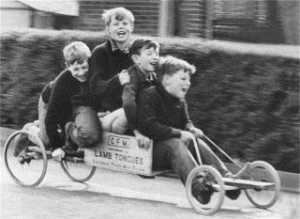

SW12 to S12 to S18
Active Member
- Joined
- Aug 11, 2015
- Messages
- 2,190
- Reaction score
- 3,278
The original SYPTE livery was also changed from memory to a darker shade of brown. The first buses I remember were a very cat vomit pale brown. Our trams always looked smart due to not only having the finest colour scheme ever but to the lack of advertising. I think some cars did carry adverts in later years though.We lost a nice livery in 1974 when Sheffield transport became part of SYPTE, the tan & creme was an awful choice of livery. In the early 1950s SCT trialed two different green colour schemes, one an all over dark green similar to the Liverpool trams of the time. The other was a two tone scheme, the main colour being fairly light with a darker shade where the blue bands were on the rest of the fleet.
Incidentally the rocker panels that you remember as black were actually Prussian Blue, but probably looked black from repeated coats of varnish.
The car in your photo was built in 1919 at Queens Road works & withdrawn in 1954. It is of a type nicknamed the "banjo" cars, owing to the shape of the small front window where the motorman's controller was.
First Sheffield have painted some modern buses in old corporation livery's..
The original SCT livery
View attachment 76725
The last SCT livery (note the registration, originally from an SCT Leyland PD3/1)
View attachment 76727
SYPTE post 1974 livery
View attachment 76728
And the experimental green livery's from 1952 (First image (C) R J Wiseman)
View attachment 76729
Credit to whoever made the model below
View attachment 76730
SW12 to S12 to S18
Active Member
- Joined
- Aug 11, 2015
- Messages
- 2,190
- Reaction score
- 3,278
We called them trolleys.Who remembers Making one of these? , if you got silvercross pram wheels your cart was the Rolls Royce of carts. problem was 3-4 mates on going down a slight hill and only one out come when trying to take a corner with no brakes, cart tipples over knees hands face grazed to hell with gravel inside cuts, driver always seem to come of worse as feet got trapped in steering often sprained ankel's, go home limping bleeding get a bollocking for putting holes in trousers, get wounds patched up by Mam with TCP with stung like a bastard, then back out for another go only this time different driver and repeat as before Happy Happy days, health and safety would have a fit nowadays.
View attachment 76767
XM657
Active Member
- Joined
- Jan 13, 2014
- Messages
- 2,015
- Reaction score
- 2,721
Have you any more of Carver St? Specifically the junction/crossroads with Wellington St. Would be most obliged to see them.Calver Street, October 1984.
View attachment 76746
Below, is one of the small workshops inside. The engineering "towel", hanging on the left made me smile.View attachment 76747
I also took a photo of the kind chap who let me take this pic, posing in the courtyard. It turned out he was the dad of one of my workmates. But I'm not sure of the privacy rules on this site, so haven't posted it
I'm guessing this photo is Carver St between Wellington St and the Moor. If so a little higher up on that side used to be Olivetti's (typewriters) shop, 58-61 to my knowledge. It stood out as it had been refurbished and looked bright against the majority of drab neglected properties as in your photo.
Like the doorway in the white building, must be 4' 6" off the ground. Or is it a door? When is a door not a door springs to mind.
Tops
Member
- Joined
- Oct 31, 2009
- Messages
- 198
- Reaction score
- 376
we called ours Push Carts/ Go carts. Today they would be called Death TrapsWe called them trolleys.
SW12 to S12 to S18
Active Member
- Joined
- Aug 11, 2015
- Messages
- 2,190
- Reaction score
- 3,278
Which way round did the 2 go? The number 2 went one way and the number 3 went the other but I don’t remember which was which now.Remember these well. Parents sent me and siblings on an Atlantean no2 Circular for the full round trip on many Sunday afternoons. Took about an hour and half or maybe two. Seeing some of the more salubrious parts of the city. Only years later did we work out the reason for it.
XM657
Active Member
- Joined
- Jan 13, 2014
- Messages
- 2,015
- Reaction score
- 2,721
I always believed "Sheffield speak" was 'thee' and 'tha' rather than 'De-Dah', which to me represents north of South Yorkshire, e.g. Barnsley.Some very knowledgeable people on this thread regarding Sheffield and surrounding areas . Not from Sheffield area myself got me thinking , is there a specific area where De- Dah is spoken . Go to Barnsley away game and all they sing is De- Dah, De-Dah. But on a match day you don’t very often hear it spoken although there are crowds of 30000.
Worst case we ever heard was on a boat trip in Tenby , a group got on and where talking very strong De-Dah Sheffield accents, my wife thought it was proper Welsh accents until I told her they are from Sheffield.
So just wondered if it was only from a certain part of Sheffield this accent originally comes from , like if you are born within the sounds of Bow bells you are a proper cockney and talk utter crap.
Lucky Polo's
Member
- Joined
- Dec 29, 2017
- Messages
- 212
- Reaction score
- 461
John Street West Terrace
Well-Known Member
- Joined
- Apr 23, 2017
- Messages
- 4,075
- Reaction score
- 6,472
And the junior school equivalent of karate nuchaks in a fight
Similar threads
- Replies
- 120
- Views
- 15K
- Replies
- 125
- Views
- 13K
All advertisments are hidden for logged in members, why not log in/register?



